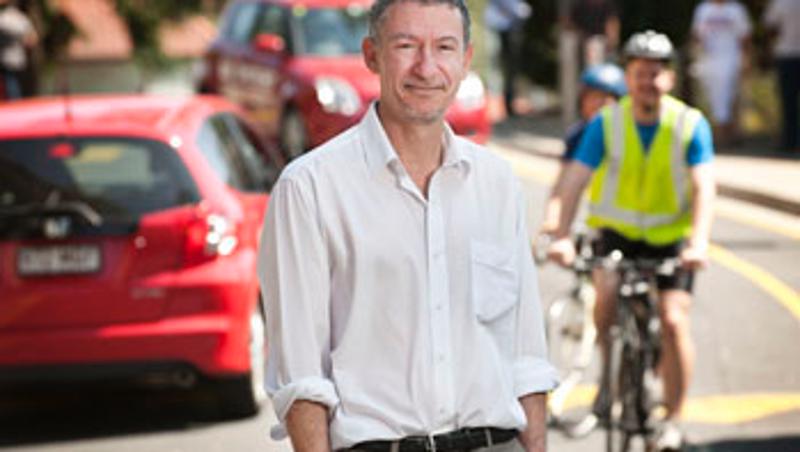
Cyclists could be putting themselves at greater risk of being hit by a car by not being adequately visible to motorists, especially in low-light conditions, a QUT optometry researcher has found.
Philippe Lacherez, a post-doctoral fellow in QUT's School of Optometry and Vision Science, surveyed 184, mainly Australian, cyclists who had been involved in collisions with cars about the conditions surrounding the collision.
The results showed that in many cases the driver "looked, but didn't see" the cyclist in time to avoid the collision.
"We asked the cyclist about the time of day, the weather and general visibility at the time of the collision as well as what they were wearing and the lights on their bikes," Dr Lacherez said.
"We found that crashes disproportionately occurred during low- light conditions such as at dawn, dusk or at night. Only 34 per cent of cyclists in these low-light crashes were wearing reflective clothing and 19 per cent of them said they weren't using bicycle lights at the time of the crash.
"We're concerned that this means cyclists are making themselves more vulnerable by not being adequately visible to an oncoming driver. What is surprising is that 61 per cent of cyclists attributed the crash to driver inattention -- only two of the 184 directly attributed the crash to their own visibility."
Dr Lacherez said cyclists could enhance their chances of being seen with reflective clothing and warned that fluoro clothing, while conspicuous during the day, was not visible in low light.
"Fluorescent clothing needs UV rays to be reflective and so don't work at night," he said.
"Cyclists should add reflective strips to their knees and ankles because the pedalling movement makes light from the headlights bounce back to the driver making it easier to register they are there.
"Cyclists also need to wear a reflective vest and, of course, have lights on their bike to increase their chances of being seen in low-light as well as at night."
"Our previous research has clearly demonstrated that when cyclists add these strategic reflective markings it leads to a large increase in visibility, which in turn leads to motorists recognising a cyclist on the road much earlier. This simple step could make cycling in low-light much safer."
Media contact: Rose Trapnell, rose.trapnell@qut.edu.au, 3138 2361 or 0407 585 901 for n.widdowson@qut.edu.au.




